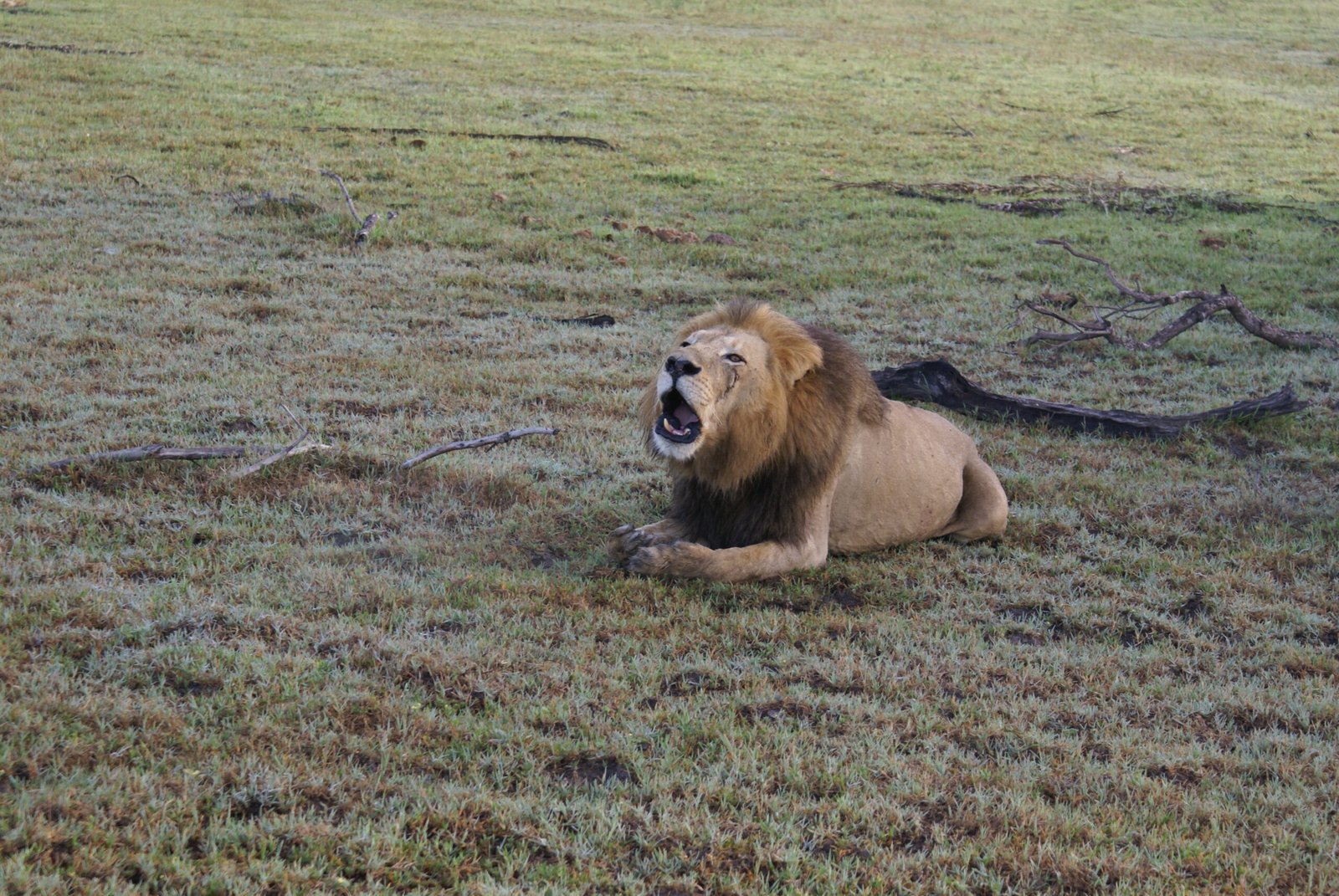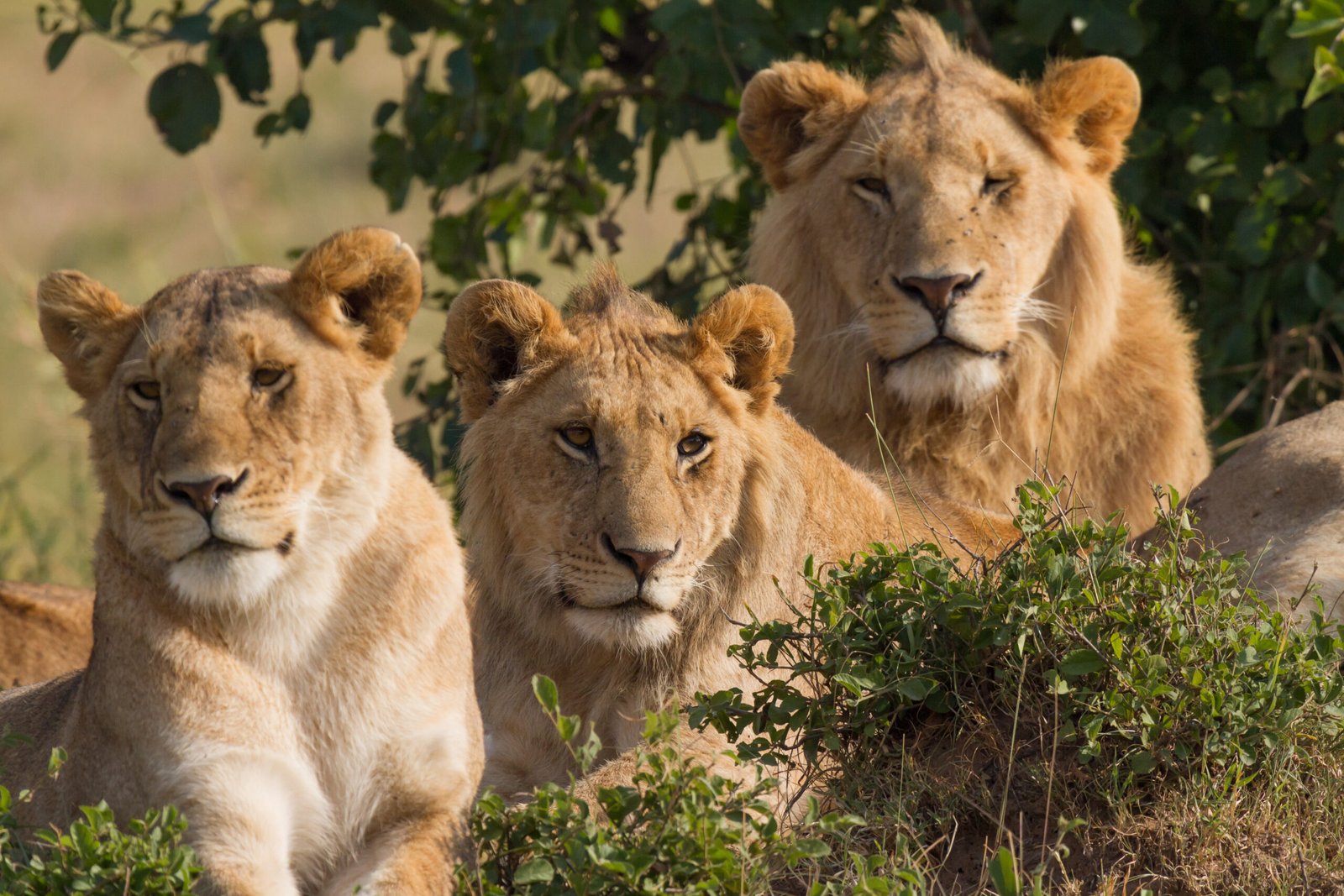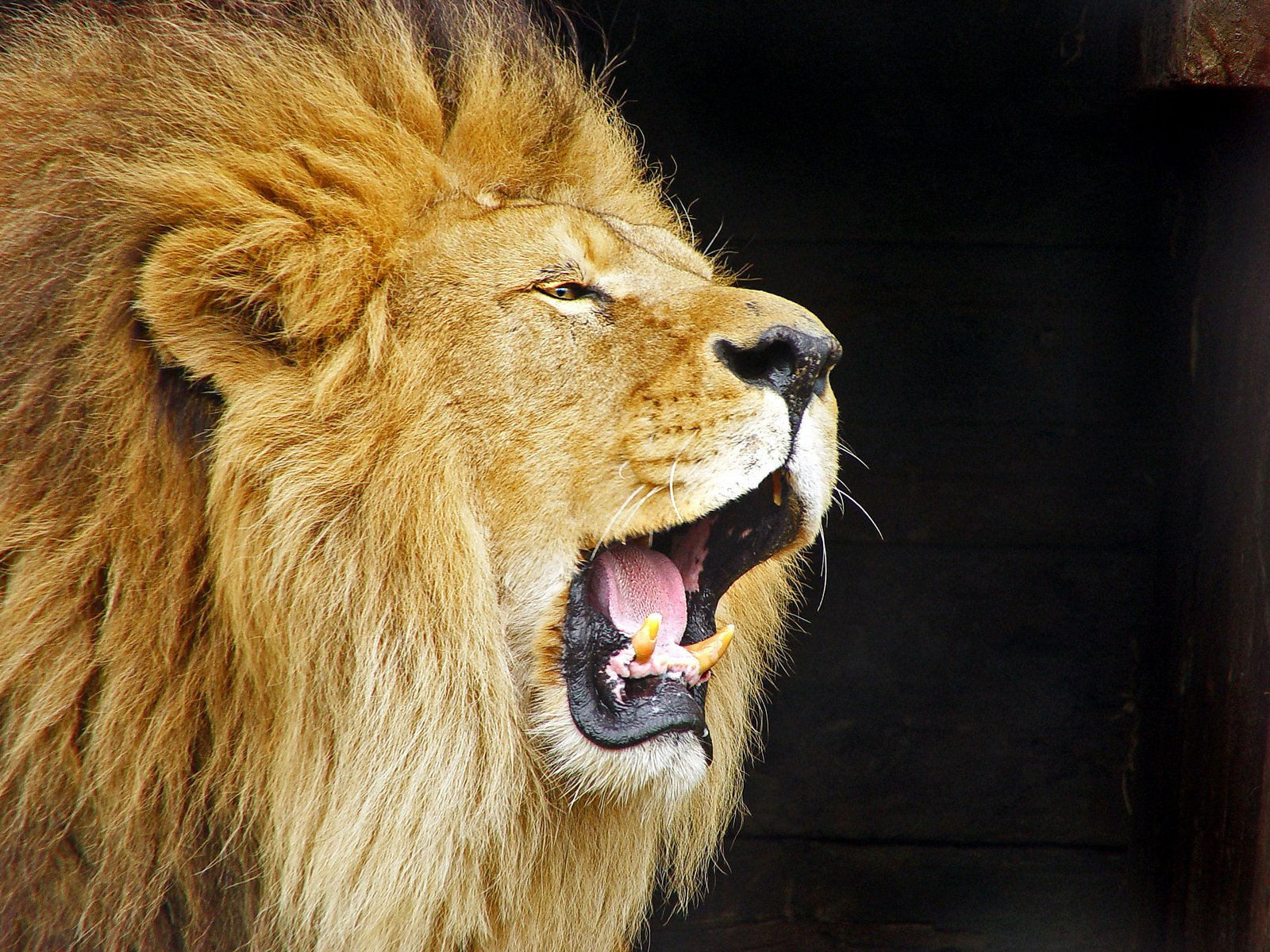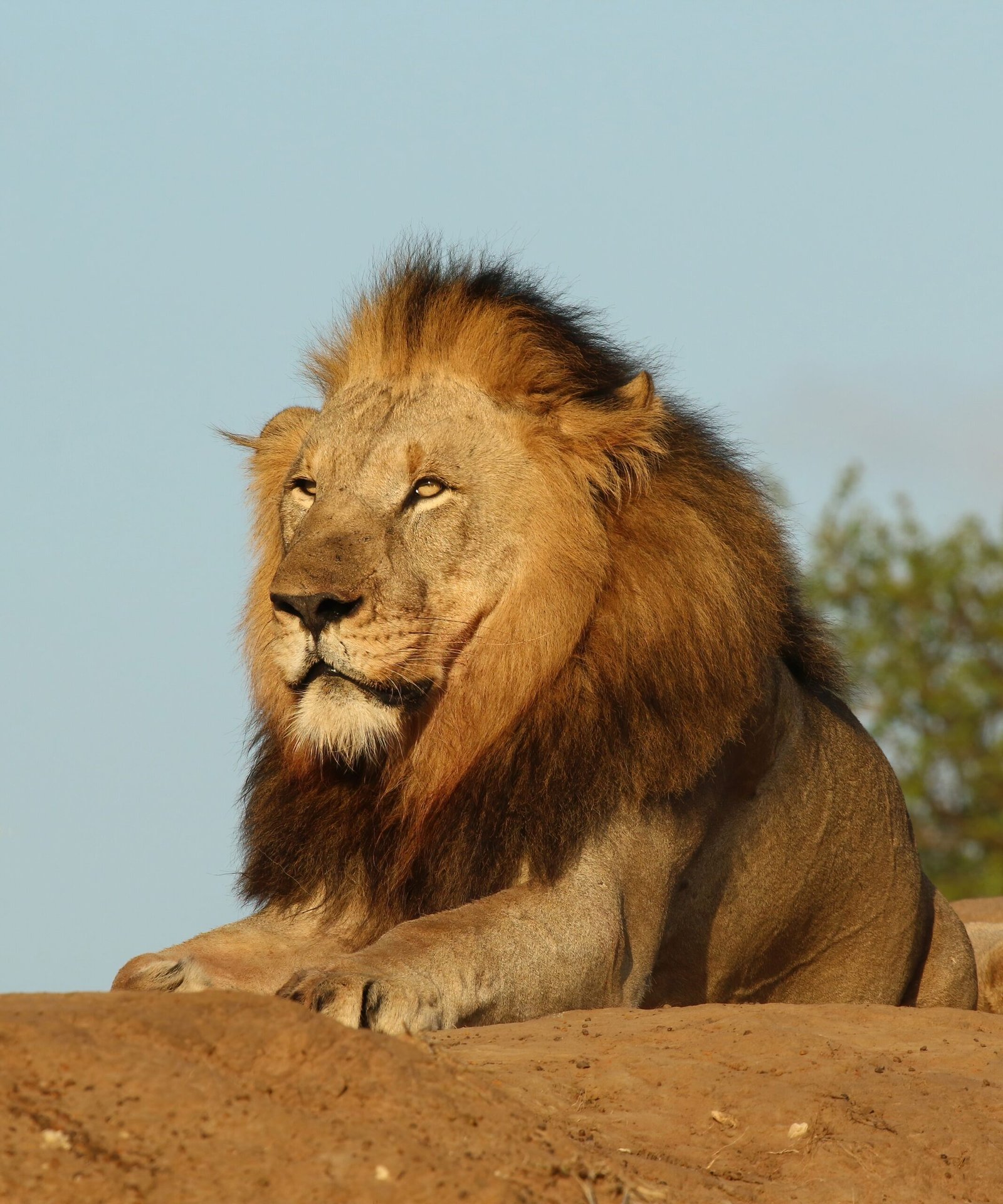Lions are more than just the kings of the savanna—they’re full of surprises, quirks, and even a dash of drama! If you think you know everything about these majestic big cats, think again. Get ready to see lions in a whole new light with these wild and wonderful facts. Which one will wow you the most?
Lions Are the Only Truly Social Big Cats

Lions break the big cat mold with their love for community life. While tigers and leopards prefer solitude, lions form prides—a rare social structure in the cat world. These groups, often made up of lionesses, their cubs, and a few dominant males, can grow to 40 strong. Within the pride, roles are clear: lionesses team up to hunt, while males defend the territory. Their bonds are reinforced through grooming, nuzzling, and cooperative care of cubs. In the wild kingdom, lions aren’t just kings—they’re family-first felines, ruling together with strength in numbers.
Their Roar Can Be Heard Five Miles Away

A lion’s roar is nature’s loudspeaker—deep, thunderous, and impossible to ignore. It can echo across the savanna for up to five miles, letting rivals know who rules the territory and calling the pride together. This vocal might comes from a uniquely adapted voice box and long vocal cords, powered by a chest full of muscle. When a lion roars, it’s not just making noise—it’s sending a message: “I’m here, I’m strong, and this land is mine.” It’s one of the wild’s most powerful sounds, and it turns heads for a reason.
Female Lions Run the Show

That’s right—behind every majestic pride is a team of fierce, hardworking lionesses. While males often get the spotlight with their flowing manes and thunderous roars, it’s the females who do the heavy lifting. Lionesses hunt in coordinated groups, strategizing to outsmart prey and ensure the pride gets fed. They also raise the cubs, defend territory when males are absent, and maintain the pride’s social bonds. The males may protect the pride from intruders, but it’s the lionesses who are the true backbone of lion society—smart, strong, and absolutely essential.
Lions Sleep Up to 20 Hours a Day

Exactly! Lions are the ultimate energy conservers. That 20-hour snooze fest isn’t laziness—it’s smart survival strategy. Because hunting big, powerful prey takes intense bursts of energy, lions rest most of the day to stay ready for action when it counts. They’re most active at dusk and dawn, when it’s cooler and prey is easier to sneak up on. So next time your cat lounges in a sunbeam all afternoon, remember—they’re just honoring their big cat ancestors’ legendary chill game.
Lion Cubs Are Born With Spots

Exactly! Those baby spots aren’t just cute—they’re practical. The rosette-like markings help lion cubs blend into tall grasses and dappled shadows, offering camouflage from predators during their most vulnerable stage. While most of the spots fade with age, some lions keep faint traces on their legs or belly, like a subtle reminder of their wild childhood. It’s nature’s way of giving the tiniest royals a fighting chance before they grow into jungle royalty.
Lions Show Affection With Head Rubs

Absolutely! Head rubbing, or nuzzling, is a vital social behavior among lions. It’s more than just an adorable moment—it helps reinforce bonds within the pride. When lions press their foreheads or cheeks together, they’re not only sharing affection but also mixing scents from facial glands, which strengthens their group identity. Think of it as a combination of a warm greeting and a “you’re one of us” badge. In lion society, it’s the ultimate show of trust and connection—fuzzy high-fives and all.
Lion Prides Have Unique “Voices”

Exactly! A lion’s roar can be heard up to five miles (8 kilometers) away and carries vital information: identity, strength, sex, and even emotional state. Each lion’s vocal “signature” helps pride members stay in touch across vast territories and avoid unnecessary conflicts. When an unfamiliar roar echoes through the savanna, it’s like getting a call from an unknown number—only this one might end in a territorial showdown. It’s nature’s version of long-distance communication, no cell towers required.
Lions Can Eat Up to 90 Pounds in One Sitting

That’s right! Lions are feast-and-famine eaters, meaning they might go days without food, then gorge when a kill is made. An adult male lion can consume up to 90 pounds (40 kg) in one sitting, especially after a successful hunt. It’s a survival strategy—eat as much as possible while the food lasts, because the next meal is never guaranteed. And with competition from hyenas, vultures, and even other lions, it’s truly “eat fast or go hungry” on the savanna.
Lions Can Climb Trees (Sometimes)

Absolutely! While it’s not typical behavior for most lions, certain prides—especially in Uganda and Tanzania—have developed the quirky habit of climbing and napping in trees. Scientists aren’t entirely sure why, but theories include escaping biting insects, catching a cool breeze, or just enjoying a better view of the savanna. Whatever the reason, seeing a 300-pound predator draped across a branch is both majestic and mildly hilarious. Tree-climbing lions are proof that even kings of the jungle like to kick back—elevated style.
Their Manes Are Like Mood Rings

Exactly! A male lion’s mane is like nature’s version of a power suit. The thicker and darker it is, the more it signals strength, maturity, and high testosterone levels. Other lions—and lionesses—notice. In fact, lionesses often prefer males with fuller manes, associating them with better genes and greater protection.Interestingly, manes can also thin out during times of stress, illness, or extreme heat, which means they’re a real-time indicator of a lion’s physical condition. It’s one of the few examples in the animal kingdom where a hairstyle genuinely tells the story of health, status, and survival.
Lions Have a Secret Weapon: Teamwork

Exactly! Lion prides operate like seasoned teams on the savanna. While most big cats are solitary stalkers, lions rely on group strategy to tackle large or fast-moving prey like zebras, wildebeests, or even buffalo.Typically, lionesses do the bulk of the hunting, working together to flank and ambush their target. Some will drive the prey toward hidden teammates, while others cut off escape routes. It’s not just brute strength—it’s coordination and timing, honed through practice and instinct.
This teamwork boosts success and ensures the whole pride—especially cubs and older members—gets fed. It’s nature’s version of a perfectly executed playbook!
Lions Can Leap Up to 36 Feet

With a single, powerful bound, a lion can leap the entire length of a school bus—an astonishing display of strength and agility. This incredible burst of energy allows lions to launch surprise attacks on unsuspecting prey with lethal precision. Their muscular build and swift reflexes make them formidable hunters, capable of closing the distance in mere seconds. It’s this explosive movement that defines their dominance on the savannah.
Lion Tails Have a Unique Tuft

At the tip of every lion’s tail is a distinctive black tuft of fur, which sometimes conceals a small, sharp, bony spike. Though its exact purpose remains a mystery, researchers believe it could play a role in communication, signaling to other lions during hunts or social interactions. Some speculate that the hidden spike may even serve a defensive function in close encounters. This curious feature adds yet another layer to the lion’s mystique and evolutionary complexity.
Lions Can Hold a Grudge

Believe it or not, lions have impressive memories and can recall past conflicts, often holding grudges against their rivals. These powerful predators don’t easily forget those who challenge or wrong them. If you steal a lion’s meal, you might just make an enemy for life—because in the lion world, payback isn’t off the table. The social dynamics within a pride can be intense, and yes, lion drama is very real!
Lionesses Synchronize Their Births

Female lions in the same pride often synchronize the timing of their births, creating a shared “daycare” for their cubs. This cooperative parenting allows them to nurse, protect, and care for each other’s young, strengthening the bonds within the pride. The cubs grow up in a playful, social environment where they learn essential skills through games and group interactions. It’s teamwork at its finest—even nap time is a group activity!
Lions Are the Only Cats With a Social Mane

That iconic mane is exclusive to male lions—no other wild cat sports such a striking feature. Far from being just decorative, the mane serves as vital protection during fierce battles, shielding the neck from bites and claws. It also acts as a visual signal of strength and maturity, attracting potential mates and intimidating rivals. In the wild, a lion’s mane is both armor and advertisement—a true symbol of power and status.
Lions Are Not the Fastest Cats

Cheetahs may steal the spotlight with their 70 mph sprints, but lions top out around 35 mph. Rather than relying on raw speed, lions use their powerful muscles, strategic stealth, and tight-knit teamwork to secure a meal. They stalk prey with patience, then launch a short, explosive attack when the time is right. It’s not about outrunning—it’s about outsmarting and overpowering.
Lions Communicate With More Than Just Roars

Grunts, moans, huffs, and even meows—lions have a rich vocal language all their own. Each sound carries a specific meaning, whether it’s soothing restless cubs, coordinating a hunt, or rallying the pride. These vocal cues help maintain social bonds and ensure smooth communication in the wild. In the lion world, every roar and rumble tells a story.
Lions Have Fewer Teeth Than You Think

Lions may only have 30 teeth—fewer than humans—but what they lack in number, they make up for in power. Their long, razor-sharp canines are built for piercing and slicing, effortlessly tearing through thick hide and even bone. Behind that fearsome bite is a jaw designed for raw strength, perfect for bringing down large prey. When a lion bites, it means business.
Lion Cubs Are Vulnerable to Predators

Despite having powerful and fearsome parents, lion cubs are incredibly vulnerable in their early weeks. Threats come from all sides—hyenas, leopards, and even rival lions pose serious dangers. To keep them safe, lionesses go into full protective mode, often hiding their cubs away in dense brush or secluded spots. For the first few weeks of life, secrecy and vigilance are a cub’s best defense.
Lions Once Roamed Much of the World

Long ago, lions roamed far beyond Africa, spreading across Europe, Asia, and even the Americas. These majestic predators once held a global reign, adapting to a wide range of habitats. Over time, however, their range shrank dramatically due to climate changes and human activity. Today, wild lions are mostly found in sub-Saharan Africa, with a small and endangered population holding on in India’s Gir Forest.
Lions Can Swim—But They Don’t Love It

Lions can swim if they have to, but it’s far from their favorite activity. Unlike their tiger cousins, who often dive in willingly, lions tend to avoid water whenever possible. When forced to cross a river or chase prey through wetlands, they’ll do it—but with all the elegance of a soggy housecat. For these regal beasts, dry ground is definitely the preferred domain.
Lion Whiskers Are Like GPS

Each lion’s whisker pattern is as unique as a fingerprint, giving researchers a handy way to identify individuals in the wild. But these whiskers aren’t just for show—they’re incredibly sensitive, detecting subtle changes in air movement and nearby objects. This allows lions to navigate and hunt effectively, even in total darkness. In a world where stealth is key, whiskers are one of a lion’s secret weapons.
Lions Inspire Myths and Legends Worldwide

From ancient Greek myths to modern movie legends, lions have prowled through human storytelling for millennia. They’ve come to symbolize courage, strength, royalty, and the untamed power of nature. Whether guarding thrones or starring on the silver screen, lions captivate our imagination like few other creatures. Their roar echoes not just across the savannah, but through the pages of history and culture.
Lions Are Facing an Uncertain Future

Lion populations have plummeted over the past century, with habitat loss, poaching, and human-wildlife conflict pushing them toward the brink. These majestic cats, once rulers of vast territories, now survive in shrinking, fragmented ranges. Every remaining pride is a vital link to the wild heritage we risk losing. Protecting lions isn’t just about saving a species—it’s about safeguarding the magic, balance, and wonder of the natural world for generations to come.
Cubs Practice Hunting With Play

All that playful wrestling, pouncing, and chasing among lion cubs isn’t just for fun—it’s essential training. Through play, cubs hone the strength, coordination, and tactics they’ll one day use in real hunts. It also teaches them how to work together, building the teamwork that’s key to a pride’s success. In the lion world, playtime is preparation for greatness.
Which of these lion facts surprised you the most? Would you dare to join a pride—or maybe just nap with the cubs?

Suhail Ahmed is a passionate digital professional and nature enthusiast with over 8 years of experience in content strategy, SEO, web development, and digital operations. Alongside his freelance journey, Suhail actively contributes to nature and wildlife platforms like Feline Fam, where he channels his curiosity for the Feline into engaging, educational storytelling.
With a strong background in managing digital ecosystems — from ecommerce stores and WordPress websites to social media and automation — Suhail merges technical precision with creative insight. His content reflects a rare balance: SEO-friendly yet deeply human, data-informed yet emotionally resonant.
Driven by a love for discovery and storytelling, Suhail believes in using digital platforms to amplify causes that matter — especially those protecting Earth’s biodiversity and inspiring sustainable living. Whether he’s managing online projects or crafting wildlife content, his goal remains the same: to inform, inspire, and leave a positive digital footprint.






